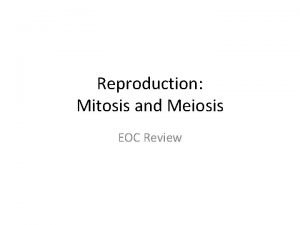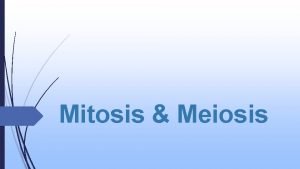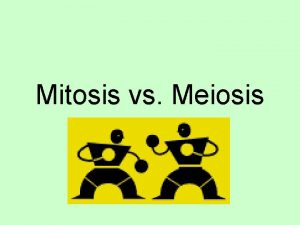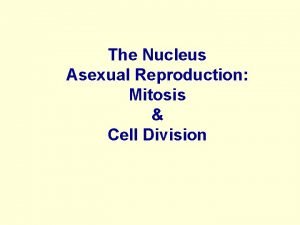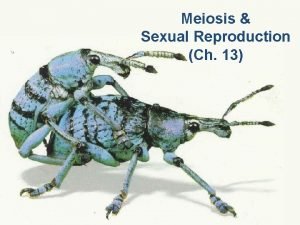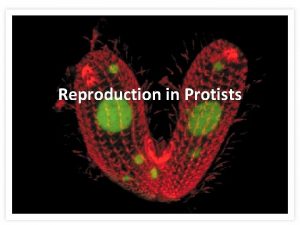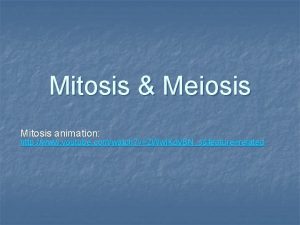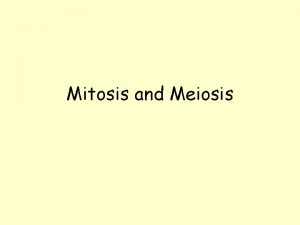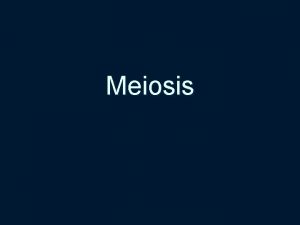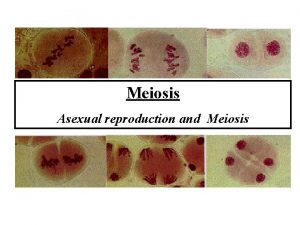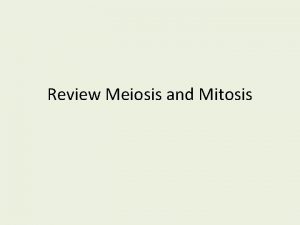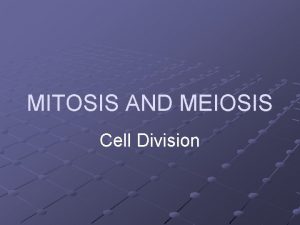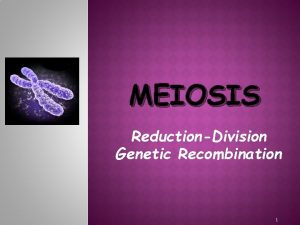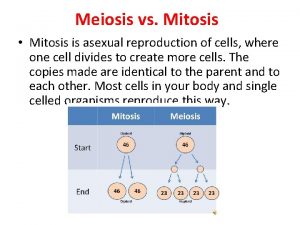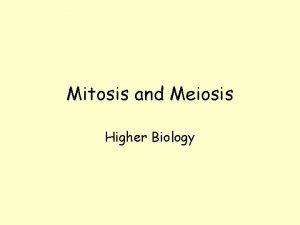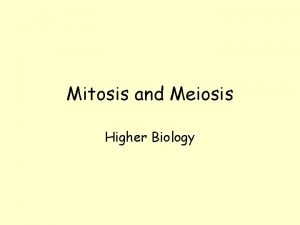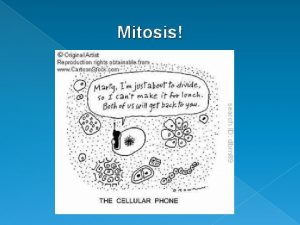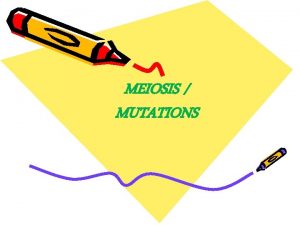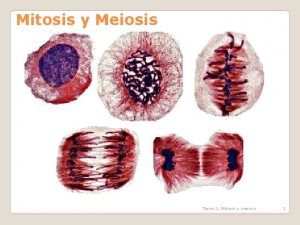Meiosis with Mitosis Review and Comparison Mitosis asexual
















- Slides: 16

Meiosis with Mitosis Review and Comparison

Mitosis (asexual reproduction) vs. Meiosis (sexual Reproduction) Overview Mitosis • Occurs in 1 stage Meiosis • Occurs in 2 stages • Produces 2 genetically identical diploid cells • Produces 4 genetically different haploid cells (genetic recombination) • It is Asexual Reproduction • For Sexual Reproduction • Produces “clones” with no genetic variability • Produces genetically variability due to recombination • Occurs in body cells (autosomal) and creates two diploid cells • Occurs in sex cells • 2 n=46 22 pair of autosomal chromosomes and 1 pair sex chromosomes • 4 gametes , haploid cells (sperm and egg) formed • n=23 22 autosomal chromosomes and 1 sex chromosome • Forms a tetrad

Diploid Chromosomes We call somatic cells diploid (2 n) meaning you have 2 copies of each chromosome (1/2 from mom and ½ from dad) Autosomal chromosomes are non-sex chromosomes › These contain genes that have nothing to do with determining your sex Each of your cells contain 44 autosomal chromosomes and 2 sex chromosomes (XX for female and XY for male) for a total of 46 chromosomes in each nuclei of your cells

Mitosis Produces Identical, Diploid Daughter Cells (46 chromosomes in the nuclei of the cells) Replicates Above are Homologous Chromosomes - Same chromosome with same types of genes on each chromosome, just different variations from each parent

Meiosis Overview **Required for Sexual Reproduction **Diploid cells divide twice to produce haploid (n) sperm or egg (each have 23 chromosomes) **Produced in the ovaries (females) and testes (male) **Results in 4 NON-IDENTICAL haploid (n) cells Genetic recombination creates genetic variability in either sperm or egg For each meiotic division, 4 sperm are produced but typically only 1 egg survives

Fertilization A zygote is formed when one sperm and egg fuse to create a single diploid cell. Although numerous sperm attempt to fertilize the egg, only one will succeed Diploid zygote – will undergo mitosis

Sex Chromosomes Male = XY Female = XX

Meiosis I

Meiosis II

Genetic Recombination

Genetic Recombination: Crossing Over A reassortment of chromosomes and genetic information they carry **Pink is from your mom, blue from your dad **Non-sister chromatids exchange genetic information

Problems During Meiosis

Non-Disjunction **chromosomes of a homologous pair (tetrad) fail to separate and move to the same pole of the cell. Some gametes may have an extra chromosome while others lacking ** Down syndrome occurs because of this. Called trisomy 21, there are 3 of chromosome #21 rather than a pair!

Karyotypes – Pictures of a person’s Chromosomes – Show Abnormalities Male with no chromosomal abnormalities

Abnormal Karyotype Trisomy 18 – Due to Non-disjunction

Chromosomal Mutations Affects an entire chromosome or chromosomes Typically occur during meiosis (gamete formation) but can also occur during mitosis Can lead to cancer some cases Few harmful gene mutations are passed on to the next generation because the zygote usually dies. If it lives, the offspring may have birth defects.
 Parthenogenesis asexual reproduction
Parthenogenesis asexual reproduction Mitosis and meiosis
Mitosis and meiosis Purpose of mitosis and meiosis
Purpose of mitosis and meiosis Chromosome/mitosis/meiosis review answer key
Chromosome/mitosis/meiosis review answer key Is mitosis asexual
Is mitosis asexual Primary spermatocyte
Primary spermatocyte Mitosis sexual reproduction
Mitosis sexual reproduction Is mitosis asexual
Is mitosis asexual Meiosis and genetic variation answer key
Meiosis and genetic variation answer key What is the difference between mitosis and meiosis 2
What is the difference between mitosis and meiosis 2 Section quick check chapter 10 section 1 meiosis answer key
Section quick check chapter 10 section 1 meiosis answer key Chapter 10 section 1 meiosis
Chapter 10 section 1 meiosis Write difference between mitosis and meiosis
Write difference between mitosis and meiosis Kesler science the lab room answer key
Kesler science the lab room answer key Gametic cells vs somatic cells
Gametic cells vs somatic cells Complete the concept map comparing mitosis and meiosis
Complete the concept map comparing mitosis and meiosis Mitosis and meiosis youtube
Mitosis and meiosis youtube

